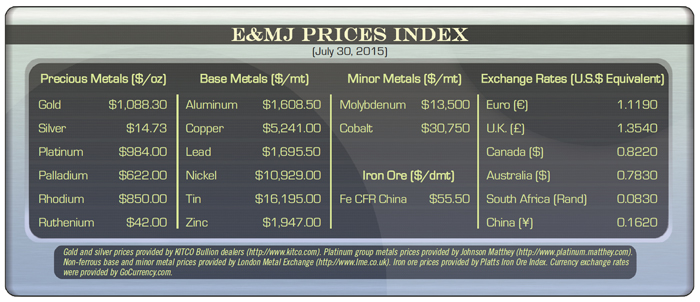Following the recent announcement by the Chinese central bank of a seemingly underwhelming 57% increase in gold reserves, the gold price plunged to below $1,100/oz amid a broader commodities sell-off. Data from Wood Mackenzie suggest these price levels put approximately 10% of gold miners in loss-making territory. However, this price drop only exacerbates a trend, which gold miners have been tackling for some time, as highlighted by Wood Mackenzie in a new analysis of gold and copper miners.
The report, Value creation in the mining sector: a long-term divergence between copper and gold producers, reveals that in 2000, gold miners commanded a 50% market premium over copper miners. But following a decade of generally poor capital allocation, cumulative net losses and poor shareholder returns, by June this year, the market priced the gold mining sector at just a fraction above its net tangible worth. In contrast, at the same juncture, copper miners commanded a 25% premium over gold miners on a price-to-net worth basis, somewhat surprising given the broad sell-off in base metal mining equities from their peaks back in 2011.
Dr. Ryan Cochrane, senior research analyst for Wood Mackenzie, explained that copper miners have generally enjoyed higher operational and residual cash flow margins than gold miners despite copper prices underperforming gold prices over the past 14 years. “Relatively pure-play copper miners outperformed the copper price, with share prices rising at an annualized rate of 10% (excluding dividends) over the same period: an outstanding result considering the losses since the 2011 bear market began,” Cochrane said. Wood Mackenzie highlights that in contrast, 10 of the largest gold miners significantly underperformed the gold price with share prices rising by just 1.4% per year since 2000.
The analysis shows that the average dividend yield for a selected copper mining population was 4% over the 14-year period, compared with 1% for selected gold miners.
So what is behind the divergence in returns between the copper and gold sectors? A significant factor is the approach and success of capital allocation, resulting in the copper mining segment growing net worth per share at a much faster rate than that seen in gold mining. “For copper miners, a conservative managerial approach of capital allocation meant that project development was financed largely through internal cash flow while equity and debt financing was used relatively sparingly,” Cochrane said. Gold miners, however, aggressively pursued production growth and hedged significant portions of their production at relatively low gold prices, effectively missing large portions of the gold market bull run.
“Furthermore, the quest for production growth—especially in the latter portions of the bull market—meant that many gold miners developed increasingly marginal projects and paid excessive premiums for acquisition-driven production growth through the extensive use of debt and highly dilutive equity financing,” Cochrane said. Wood Mackenzie believes this has been compounded by gold mining companies maintaining large dividend payments despite recording cumulative net losses over the period, with payouts funded partly through external financing.
Looking ahead, Wood Mackenzie said that significant challenges remain. “Interest rate hikes and a generally bearish metal price outlook are likely to outweigh short-term mining cost savings made possible by the stronger dollar, the lower prices of key input commodities and active steps by management such as high grading,” Cochrane said. “Furthermore, most of the current projects in the gold mining pipeline were evaluated on the basis of prices above $1,200/oz and the fall in prices to $1,100/oz will result in a significant cut in future supply. We estimate that nearly 40% of project production capability is uneconomic at current prices.
“With major gold miners struggling to replace reserves, production may begin to decline and higher prices will be required to justify the next round of large capital expenditures,” Cochrane said.
For more information on the report, visit www.woodmac.com.







